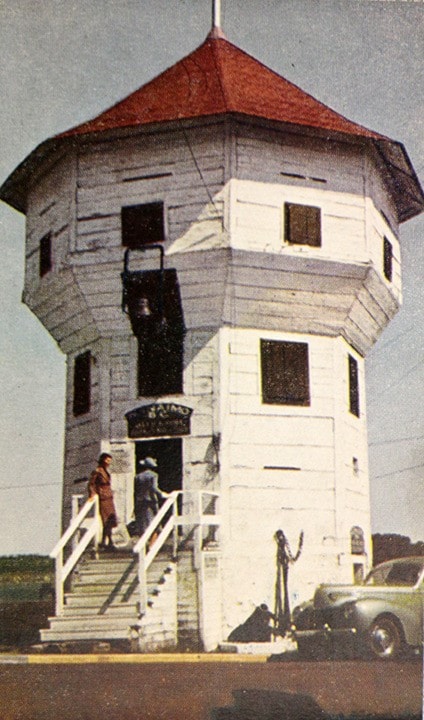“Of course, none of the exhibits is for sale. We probably could sell the Bastion over and over again!” —custodian Frank Greenfield.
Nanaimo has its museum and it has its historic and iconic Bastion. Back in the early ‘70s they were one and the same. And therein lies today’s tale...
Under the kindly eye of custodian Frank Greenfield, visitors young and old trooped up worn wooden steps and into the past, to an age when coal was king and Nanaimo Harbour bustled with ships of sail and steam from around the world.
Maintenance and operation of the Bastion in 1970 was the responsibility of the Native Sons of B.C., Post No. 3. Mr. Greenfield must have been one of the few native sons who wasn’t a native son, having lived in Nanaimo for only 42 of his years. Born in Ontario, he’d retired after 40 years as a game warden.
With a smile, he mused over several exhibits which had become museum pieces during his lifetime. One was a rusted trap, about the size used for catching muskrat. “Why, I can remember when bear traps — big, ugly devils with teeth — were banned by the government. I had two, which I’d confiscated. They lay about for years, when I finally threw them out. Now they’re collectors’ items... Quite often, we get American tourists in here who offer good money for just about everything they see. But, of course, none of the exhibits is for sale. We probably could sell the Bastion over and over again!”
Unlike most museums, the majority of the Bastion’s exhibits weren’t behind glass and, under Greenfield’s watchful eye, selected adults were allowed to examine smaller items by hand. (This would make today’s professional curators cringe!) One of the most striking pieces that caught the eye from the minute one entered and signed the guest book was an eight-foot-long muzzle-loading shotgun, mounted on the wall. With its 1 1/2-inch bore, this appalling weapon was mounted, like a cannon, beside a lake, then primed with black powder and loaded with odds and ends of hardware for shot. When enough unfortunate ducks or geese came within range, it was fired with devastating effect and brought down “as many as 100 birds with a single blast”.
One has to shudder at the thought of how many birds were mutilated beyond eating and, worse, how many suffered a lingering death or drowned.
As Nanaimo was built upon the mining of coal, many of the exhibits in the ’70s were of this once-flourishing industry: miners’ lanterns, tools and photographs of the vanished mine shafts, of the miners and of the ships which called to take Island bituminous coal around the world. There were firearms, from handsome Colt revolver to deadly derringer, one obviously having been dug up after years beneath the earth. If only they could speak...
An interesting item that did speak, if somewhat choppily, was the first logbook from the Entrance Island lighthouse. Kept by Robert Gray, the initial entry is dated midnight, Aug. 1, 1879, and covers a 48-hour period: “Steamer James Douglas, with stores the first part [sic], a light breeze, middle and latter fresh breeze. And clear weather throughout, a bark in tow of the steamer Beaver, and steamer Ada bound out from Nanaimo, the first part, the wind from West to N.W., the middle part light airs, a bark in tow bound in...”
The last entry is merely dated July 1881: “Fresh breeze at times first and middle parts wind east. Latterly a light S.W. breeze and clear.” Visitors often remarked on Gray’s beautiful flowing penmanship.
As the Snuneymuew and Chinese played an important role in the city’s development, they were represented by several exhibits. Visiting homemakers (housewives in the old days) likely appreciated the coal-fired hand irons, and visitors with a nautical bent eyed the handsome steering compass from the CPR’s famous coastal ferry Princess Victoria.
Memories of an age before inflation were rekindled by a 1934 menu for the Hotel Malaspina where a club breakfast could be enjoyed for 35 cents, lunch 50 cents and dinner from 65 cents. (Ah, the good old days when everything was dirt cheap; too bad you only made a dollar a day — if you had a job in the dirty ’30s.) In the manner of not-so-good-old-days, all of these meals were prepared by “expert white cooks only”.
As noted, Nanaimo has a new museum now, almost sterile in comparison, but the venerable Bastion goes on doing its duty as the Hub City’s oldest and most priceless historic treasure.
